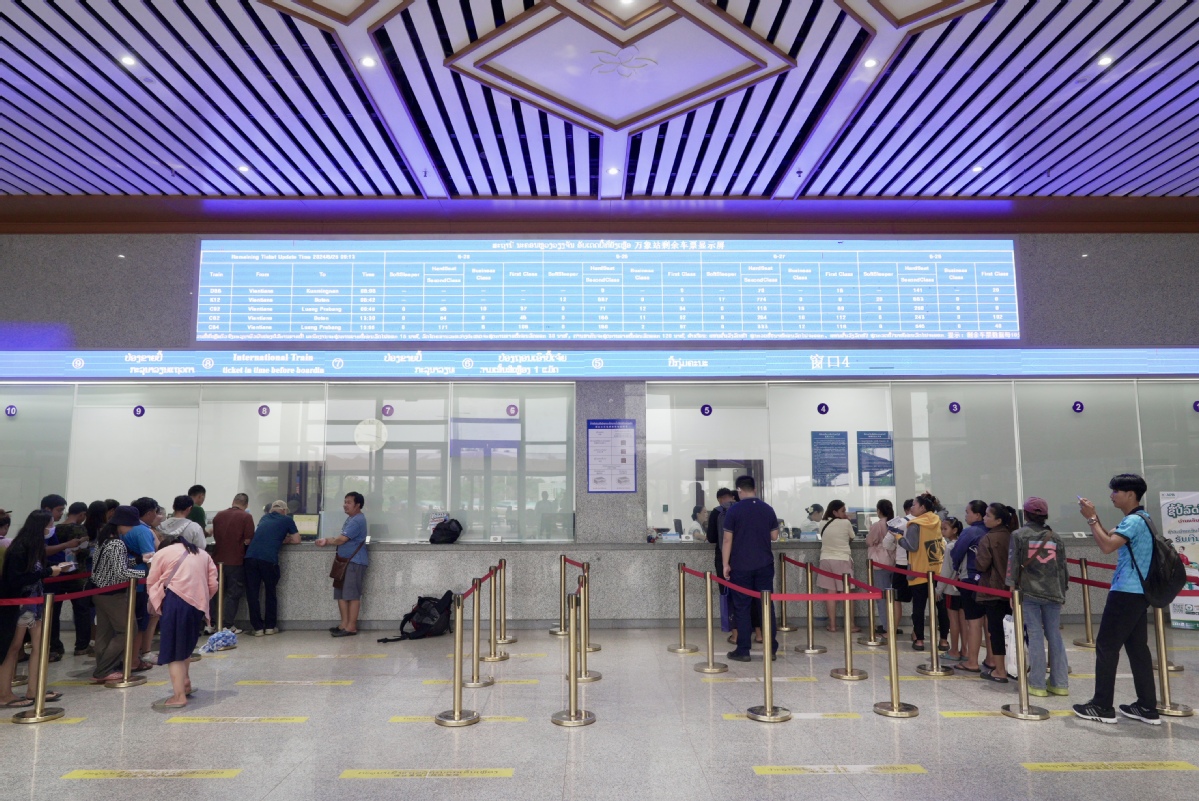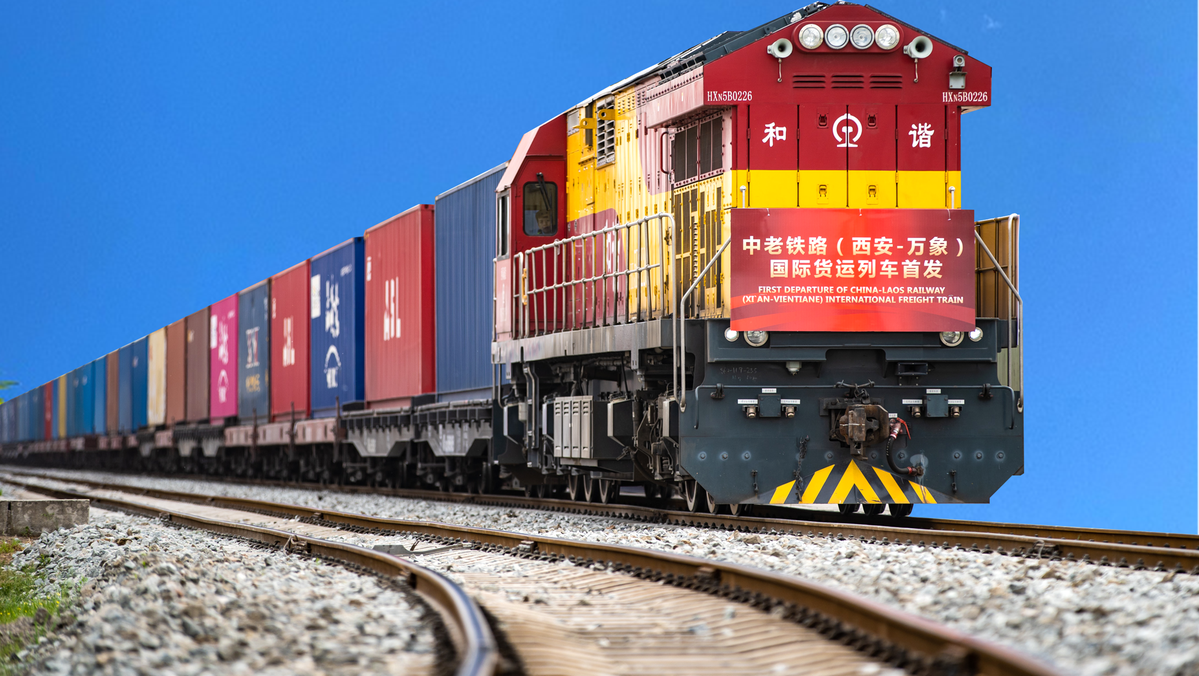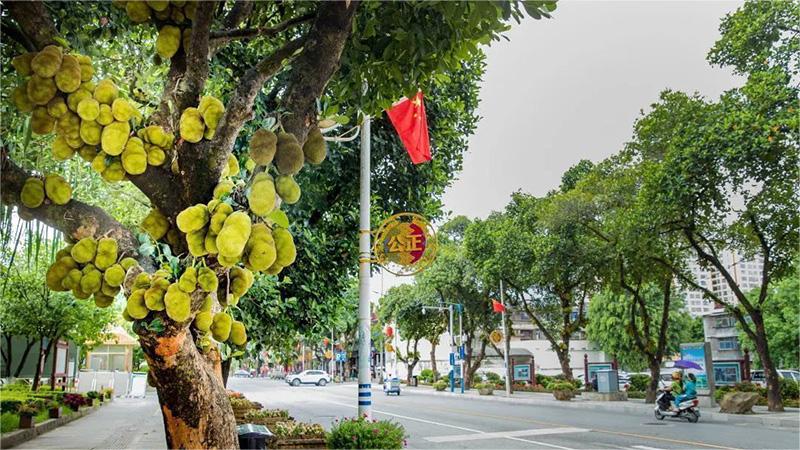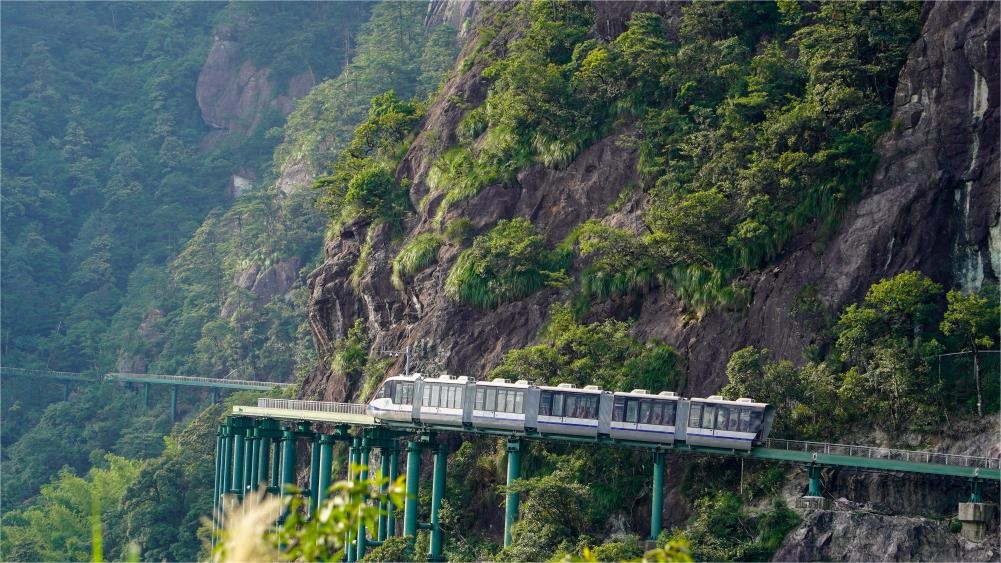Tracks of change lead to prosperity

Staff members perform a dance on the inaugural train service from Xishuangbanna, Yunnan province, to Luang Prabang, Laos, on April 13. (CHINA DAILY)
As the Chinese saying goes, "Roads lead to riches."
And this is what Somxay Laolion, a Laotian driver on the China-Laos Railway, has observed over the past two-and-a-half years.
"As I drive between Vientiane and Boten (border town) every day, I can see more and more houses and factories being built along the route," said Somxay. "Every day, I can see the changes."
Somxay said his family members are happy that he works for the railway because they believe the project is important to the development of Laos, and will provide him with a better career path.
As a flagship project under the China-proposed Belt and Road Initiative, the 1,035-kilometer railway connects Kunming, the capital of Southwest China's Yunnan province, with the Laotian capital, Vientiane. It began operations in December 2021. Cross-border passenger service began in April 2023.
With a total length of 422.4 kilometers and a designed top speed of 160 kilometers per hour, the Lao section is an electrified single-track railway.
After gaining a degree in Chinese-language studies in China, Somxay saw a Laos-China Railway Co recruitment advertisement during the COVID-19 pandemic and decided to give it a try. The LCRC is a joint venture based in Vientiane and is responsible for the operation of the railway's Lao section.
With zero knowledge of railways, Somxay had to study from scratch to pass the recruitment test. Since then, he has been learning from a Chinese colleague, or "shifu" as he calls him, the hands-on skills to drive a train.
Thanks to his hard work, when the railway began operations in December 2021, Somxay was selected to deliver the launch report from the Lao side via video to Chinese President Xi Jinping and Lao President Thongloun Sisoulith.
"I was really nervous at the time because I was afraid if I said something wrong it would affect the whole launch ceremony," said Somxay. "But the pressure was eased when the train arrived at Boten."

Passengers wait in line to buy tickets for the China-Laos Railway at the ticket hall in Vientiane station on June 25. (JIANG JIAXUAN/CHINA DAILY)
Milestone for country
Adopting Chinese technical standards, the China-Laos Railway is China's first international railway project primarily funded and built by Chinese companies and connected to China's railway network.
Since June 2020, the Laos-China Railway Co has recruited and trained Lao trainees in nine groups. More than 800 Lao employees, or over 90 percent of the trainees, have been assigned specific positions, and the proportion of Lao employees in the company is close to 60 percent, according to the LCRC.
The China-Laos Railway has opened "a new phase of development" for Laos to transform itself from a landlocked country to a land-linked one, said Saleumsak Sayamoungkhoun, director general of the Lao Ministry of Public Works and Transport's Permanent Secretary Office. "It is a milestone for Laos," said Saleumsak.
Noting the railway has maintained a positive trend of increasing volume and efficiency, as well as thriving passenger and freight businesses, Liu Hong, general manager of the LCRC, said the China-Laos Railway has become "a road of development, happiness, and friendship for the Lao and Chinese people".
In addition, Liu said the company has been working to build an international logistics golden corridor, ensure better travel for people and operational safety, promote in-depth and practical business development along the railway route, and help the people of China and Laos to connect with each other.
In 2023, the Laos section of the China-Laos Railway carried 4.089 million metric tons of cargo, a year-on-year increase of 83.1 percent, with a daily average of 11,204 tons.
During the same period, the Laos section carried 2.594 million passengers, a year-on-year increase of 85.8 percent, and a daily average of 7,106 passengers.
As part of the pan-Asia railway network running from Kunming to Singapore, the China-Laos Railway connects Southeast Asia with China, Northeast Asia, Central Asia, and even Europe, transforming Laos into a land transportation hub in Southeast Asia.
"With the trial operation of the Laos-Thailand Railway between Bangkok and Vientiane on July 13 and 14, and the future connection of the China-Laos-Thailand Railway with the Malaysian Railway, economic and trade cooperation and people-to-people exchanges between ASEAN and China will be further promoted, driving the rapid economic development of regional countries," said Liu.
In the latest step toward improved regional logistics and rail connectivity, the ASEAN Express, a new international freight train service, was launched in June by Malaysia to connect with Thailand, Laos and China.
Near the Vientiane South Station in Laos, the Vientiane Saysettha Development Zone, which is being jointly built by Laos and China, had garnered investments of $3 billion as of April, attracting 145 companies from nine countries including China, Thailand, and Japan. Among them, 72 companies are already operational.
In 2021, the LCRC moved its headquarters into the development zone.
With an area of 11.5 square kilometers, the development zone currently employs 7,000 people, and the number is expected to exceed 15,000 by the end of 2024. Total annual output will exceed $2 billion after it has reached full operating capacity.

Chinese tourists from Guiyang, Guizhou province, are welcomed by the Lao National Art Troupe in the capital Vientiane, on May 9. The first Guizhou-Vientiane train carrying more than 200 Chinese passengers arrived at Vientiane station on May 9. (DU DAPENG/XINHUA)
Tourism boost
With more Chinese tourists coming to Laos via the new railway route, the Lao government announced a 15-day visa-free policy for Chinese tourists from July during the Visit Laos Year 2024, to further encourage tourism and cultural ties between the two countries.
"The government of the Lao PDR (People's Democratic Republic) has identified the tourism sector as one of the important priorities in the country's socio-economic development and has used a large amount of the budget for the development of tourism," said Lao Deputy Minister of Information, Culture and Tourism Darany Phommavongsa.
Darany said the Visit Laos Year campaign aims to promote Lao tourism and attract more international tourists, which will contribute to job creation and foreign currency flows into the country.
"The China-Laos Railway has made a strong contribution to facilitating passengers and tourists," Darany told a group of 25 journalists and influencers from China and Southeast Asia on a media tour of the China-Laos Railway.
Organized by the Chinese Mission to the Association of Southeast Asian Nations (ASEAN) and China Daily, the media group took a train to visit key places along the railway route, including Vientiane, Luang Prabang and Boten in Laos, as well as Mohan, Xishuangbanna, Pu'er and Kunming in China from June 23 to 30.
After the launch of the railway, more Chinese tourists are coming to Luang Prabang, helping the town, which was Laos' ancient capital and is a UNESCO World Heritage Site, grab a big share of the Lao tourism market, said Bounthavone Phondala, an academic with the Luang Prabang National Museum.
Due to rising demand, Bounthavone said there has been a shortage of tour guides. The museum currently has one guide who can speak Mandarin.
Goud, who goes by one name, is from the Khmu ethnic minority group in Laos. Working in a handicraft shop in Luang Prabang for the past year and a half, she said that it has been observed that more tourists, especially from China, are coming because of the railway.
"The railway is quite helpful especially in peak seasons like winter. There are a lot of people coming to visit Luang Prabang," said Goud. "I am very happy because our products are selling well."

Passengers board a train at Xishuangbanna railway station, Yunnan, on April 13, headed to Luang Prabang in Laos. (WANG JINGYI/XINHUA)
Visitors impressed
Chen Yali, 29, a tourist from Hunan province in Central China, said she traveled by air to Xishuangbanna in Yunnan in order to take the China-Laos Railway for a three-day Lao trip.
"I teach English and history at a rural school and we talk a lot about the BRI, which makes me very interested in the railway project," said Chen. "The overall travel experience was very simple and the cross-border check was not as difficult as we had imagined."
After completing his trip in Laos, Umberto Disperati, a 30-year-old tourist from Italy, took the China-Laos Railway to start his first trip to China in Yunnan and Sichuan provinces.
"I was intending to travel from Laos to China and after looking on the internet I found out that (the railway) was the easiest way instead of taking flights," said Disperati. "It was easy to navigate the train station. It is huge and the train is quite clean and new."

The first freight train heading for the Laotian capital Vientiane departs from the Xi'an international port in Xi'an, Shaanxi province, in April 2022. (LIU XIANG/XINHUA)
Disperati said he hopes the train can open ticket bookings more in advance so he can better plan his trip.
For Laotian train driver Somxay, operating the China-Laos railway makes him feel proud.
Somxay said his shifu always tells him that every move they make will affect the safety of the passengers and the steady operation of the railway.
"When I was standing on the platform and saw the long train cars moving past the station quickly, I felt the responsibility and was really proud," said Somxay.
"I am driving the best, fastest and steadiest train in Laos," he said.
Somxay is now preparing for a test, which if he passes, will allow him to drive the train independently in the future.
Photos
Related Stories
- China-Laos Railway facilitates movement of commodities, people
- Laos plans to offer visa exemption for Chinese visitors
- China, Laos to hold Friendship Shield-2024 joint exercise in July
- Laos, China agree to jointly promote Lao tourism
- China-Laos Railway facilitates fruit transport
- China, Laos hold joint military exercise in Laos
- China-Laos Railway records over 222,000 cross-border passengers
Copyright © 2024 People's Daily Online. All Rights Reserved.









